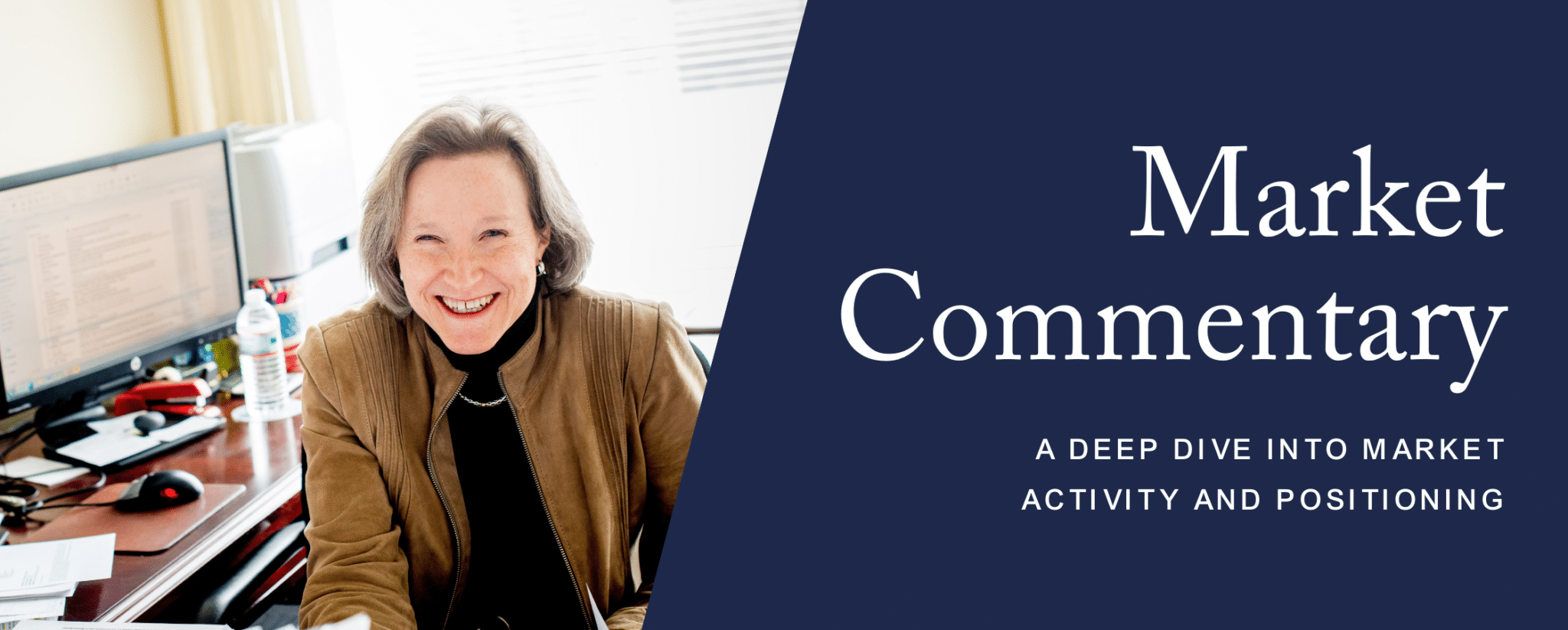
April 15, 2025
Market Summary
Investors are coming to grips with the adverse consequences of rising tariffs along with the possibility of an interim peak in AI spending. The S&P 500 Index fell 4.3% during the first quarter. After two years of outsized gains relative to the rest of the market, the “Magnificent 7”¹ (i.e., Alphabet, Amazon, Apple, Meta, Microsoft, NVIDIA, and Tesla) were clear laggards this past quarter, declining 16% and ceding market leadership to energy (+9%) and health care (+6%). The S&P 500 Equal Weighted index fell just 1.1%, reflecting broader participation in the market this quarter. For the quarter, favorable stock selection, particularly within financials, along with an overweight position in health care stocks boosted portfolio performance compared to the benchmark.
The reality that the Trump administration is intent on implementing higher tariffs on imported goods from most trading partners – both friends and foes alike – has weighed heavily upon investors. Tariffs are a tax ultimately borne by consumers that have the effect of raising prices and slowing growth. Even after Trump’s partial walk-back of his announced April 2nd tariffs, investors are still uncertain how much is negotiating tactic and how much is intended to produce permanent revenue for the government and incentivize a return of manufacturing to the U.S. Additionally, it has become clear that the “bad” medicine of tariffs, federal spending cuts, and tighter immigration controls must be absorbed before the “good” medicine of tax cuts and regulatory relief arrives. Sequencing matters in terms of the impact on the economy.
Economic Outlook
Indeed, uncertainty surrounding tariffs has been reflected in surveys of consumers and business leaders over the past couple of months, resulting in falling confidence that poses a threat to spending and hiring. This is a sharp reversal from the “animal spirits” that were unleashed immediately following the November election. Investors are now on high alert awaiting evidence that this “soft” survey data is flowing thru to more tangible (“hard”) measures of economic activity. Thus far, at least, the evidence has been scant. However, risk for the economy is now more elevated, even at tariff levels that are less than the worst-case scenarios raised by the initial April 2nd announcement.
Due to the on-again, off-again nature of tariff announcements, economists and strategists have been forced to move their recession probabilities around in response. Fortunately, Trump appears to have pulled us back from the brink of near-certain recession based on his initial reciprocal tariffs, but for now we believe it is only a temporary reprieve and thus remains a fluid situation. In any case, outlooks have been tempered due to the threat of a trade war. The consensus economic growth forecast for the year has come down by at least 1% since the start of the year. We have lowered our full-year 2025 GDP growth forecast from 2-2.5% to 1-1.5%.
The Atlanta Fed’s widely followed GDPNow real-time economic model currently projects first-quarter real GDP to decline 0.3% q/q annualized, after adjusting for an anomalous spike in non-monetary gold imports during the quarter to better align with the methodology used by the Bureau of Economic Analysis. This represents a sharp slowdown from the 2.5-3.0% growth registered for the prior three quarters. And this is before the real brunt of the recently announced tariffs has been felt.
The Federal Reserve’s Open Market Committee (FOMC) likewise adjusted its forecasts at its March meeting to reflect slower growth and higher inflation due to tariffs. Core inflation (both CPI² and PCE³) continues to stubbornly hover around 3%, above the Fed’s 2% target. With higher-than-expected inflation along with the prospect that tariffs may push price levels even higher, the Fed was forced to postpone further rate cuts for the time being.
Meanwhile, investor concerns about the possibility of a near-term peak in AI-related spending has weighed on the “Mag 7”. Fears were initially sparked in January by revelations about significant cost and efficiency gains reported by DeepSeek, the Chinese developer of a large language model to compete with OpenAI’s GPT-4, Google’s Gemini, Meta’s Llama 3, and Anthropic’s Claude 3.5, among others. The impressive performance of the DeepSeek model at a fraction of the run-rate costs of the others raised doubts about the level of investment needed to support AI applications and use cases. It also raised the stakes for developers of AI-related applications and services to begin demonstrating more tangible returns on the massive AI spending that is currently taking place. All this is important considering the still outsized influence that the “Mag 7” has on the market-capitalization weighted S&P 500 index, which still sits at about 30%. Further declines by the “Mag 7” could continue to weigh on the overall index.
We have reduced our estimate for corporate profits this year to reflect our slower economic growth outlook. Our estimate for S&P 500 EPS has been cut from $270 to $255, an increase of just +5% year-over-year, down from +10-12% previously. The bottom-up consensus still sits close to $270, which suggests the gap between the two estimates will need to close. We expect that to happen over the coming weeks as we progress through first quarter earnings season and corporate executives revise their profit forecasts lower due to tariffs.
We continue to believe expansionary tax cuts and regulatory relief are on the way, but as of now that still seems like a late-2025 or early-2026 story. In the meantime, the economy is facing some definite headwinds, including two major supply shocks (labor and imported goods), fiscal austerity resulting from DOGE federal spending cuts, a Federal Reserve that is sidelined for the time being, and a potential reverse “wealth effect” due to falling stock prices. As such, we believe it remains prudent to maintain somewhat higher than normal cash reserves in our clients’ accounts until we gain greater visibility that some or all these headwinds are starting to lift.